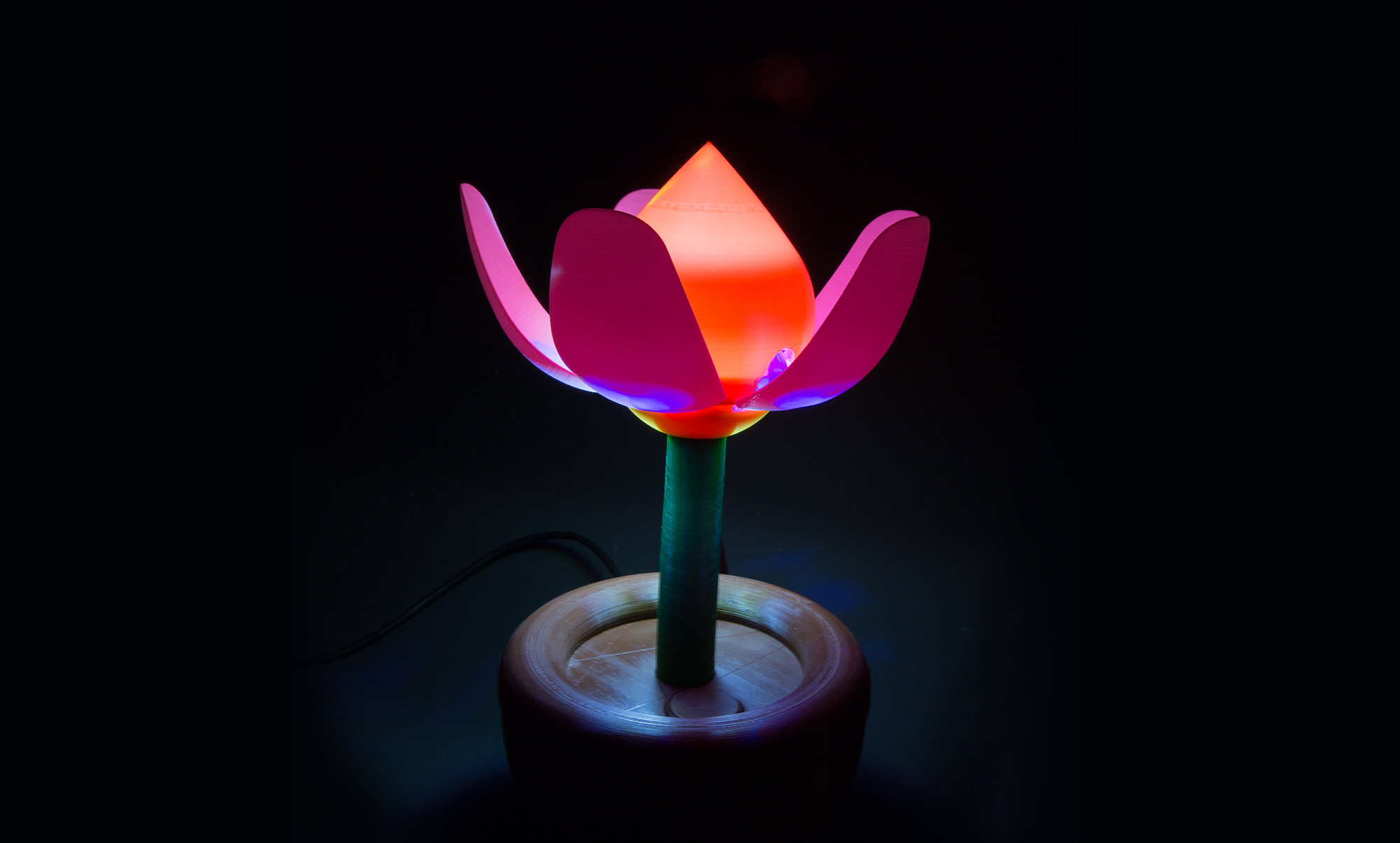

I was assigned the simple task of making a night light for my soon-to-be-born baby girl’s room and, as is my norm, I got a bit carried away, ending up with a fully articulated, Wi-Fi-enabled, 3D-printed night light. Unfortunately the Wi-Fi idea was over the top, and it never actually got used. There was also far too much hot glue under the hood for my liking, so this revision is a cleaner, simpler version operated with a push button, making use of easily sourced components from Arduino and Adafruit.
The heart of this blooming flower is a cable-actuated mechanism, which slides up and down a shaft in the center of the bloom, pulling and pushing linkages that lever the petals in and out. Full-color illumination is provided by two NeoPixel LED rings mounted back to back.
Inventive Illumination
Since the lamp receives all of its power from the 5V USB input to the Arduino, it can be powered by an old cellphone charger. In use the lamp is designed to be as accessible as possible, with a simple press of the button turning it on or off and a twist of the knob to change the color.
There is endless room for customization too, making it a great test bed for learning a bit of coding. Perhaps you’d like the lamp to turn off by itself after 30 minutes, or the colors to slowly change. Or maybe you want to add a Wi-Fi module and scrape weather pages for sunset times, turning the lamp on as the sun goes down.


